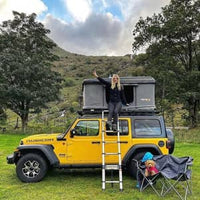Urban Exploration (if you think you’re cool enough!)
What is Urbex?
Urban exploration (a.k.a. “Urbex”, in cool circles”), is a relatively new concept in the UK, but has been around for donkeys’ years; remember when you were a kid, exploring the areas around your home and stumbling across abandoned cottages or closed warehouses? That right there makes up part of what we now call “urban exploration”, and with such easy access to sharing photos socially these days, this is an activity that has really taken off.
Legality
Urban exploration, or urban discovery as it is also known, is a multi-generational activity and one that can bring families together in a shared love for finding and exploring forgotten places; however, there are some legalities to bear in mind:
- Never enter private property, especially if it is cordoned off or marked as private property. You can be prosecuted for trespassing. It is possible to seek permission from site owners or the local police beforehand, if the place you want to visit is obviously privately owned.
- Never enter unsafe structures, especially if there is visible instabilities or fire damage. Photos from afar will have to suffice!
- Never, ever enter areas such as tube tunnels without a guide and permission. It goes without saying that meeting a train head on would not end well, and neither would getting lost forever. Just sayin’!
- Never vandalise, graffiti or otherwise damage the property in any way. “take nothing but photographs, leave nothing but footprints” is a very wise saying indeed.
For further legal urban exploration tips, please see here
Great locations to explore
OK, on with the exciting bit. We know our TentBoxers love a bit of exploration and discovery and these definitely fit the bill!
Aldwych Station, London Underground

If history if your bag, then this is a great station to book a tour of! It’s the most popular of all disused station tours, probably because it has been used as a filming location for big hits including 28 Days Later and V for Vendetta.
Originally opened in 1907 as Strand Station, it wasn’t long before it changed its name to Aldwych. Footfall was relatively low and it may have closed earlier than it did had it not been used as an emergency storage location during WW1 for 300 paintings from the National Gallery. Even after the war, passenger numbers did not increase and again the station may have been doomed for closure, but WW2 and the Blitz saw many sleep inside, using the station and tunnel as a air raid shelter. It’s role in the war no doubt saved many lives and the station lived on until it’s final closure in 1994.
A tour of the station includes the Ticket Hall, 160 steps down into the deep level tunnel and two disused platforms – visitors will also be able to see some unfinished, hand dug tunnels that date back to its inception.
Keep checking the London Transport Museum website for available tours – they aren’t regular but are available, so keep an eye!
Staying near Aldywych
Being smack in the centre of London, obviously camping spots are somewhat limited. The best bet is to camp somewhere close to London and commute in for the day.
There are a number of campsites with good reviews close to London; your preference will depend on whether you want facilities such as WiFi, showers, laundry machines etc.
Big Pit National Coal Museum, Pontypool, Wales
Unlike other, similar attractions, Big Pit is a real coal mine that now offers underground tours for those who wish to see what life was like for miners back when the pit was operational, and also snap photos of one of Wales’ most popular disused places.
Originally opened in 1880, the pit operated for 100 years before closure. It was the most important of all the collieries located in Blaenavon. A stately building from a distance, the underground workings of the pit stretch some 293 feet down and it produced over 250,000 tons of coal per year. It was one of the first to install electricity and pithead baths were also available for miners, to bathe after their shift.
The mine closed due to developments in the later years of a drift mine and focus shift to the Garw seam. More than 250 jobs were lost when it closed.
Staying near Big Pit
There are a number of campsites and parks near Big Pit, including Pont Kemys Caravan and Camping Park and Blossom Touring Park and Camp Site. Both of these are in Abergavenny, which is only 20 mins/8 miles from Big Pit.
Cromer Pillbox Defences, Norfolk

If you fancy something a bit less tour-led, then head to Cromer – there is a WW2 pillbox and spigot mortar emplacement located near Howards Hill that overlook the railway. Explorers will also be able to see a wider range of WW2 defences in the surrounding area, including slit trenches, more pillboxes and barbed wire fencing (so watch your step!)
The spigot mortar base gun emplacement dates back to 1940 and is easily accessible; the pill box dates from 1941 and is open to explore. Other pillboxes nearby have been partially buried due to cliffside erosion.
Staying near Cromer
Cromer, and indeed, Norfolk, is a well known tourist area so there’s no shortage of campsites – Cromer Camping is actually located in Cromer itself, or there are others very close by, such as Manor Farm and the C&CC site at West Runton (members only).
Brampton Valley Way, Northamptonshire

One for walkers and cyclists, the Brampton Valley Way stretches for 14 miles through Northamptonshire/Leicestershire. It is built on the former Northampton to Market Harborough Railway train line (closed in 1981) and is classed as a “linear park”; i.e. it does not form a loop.
We know our tent-boxers are keen walkers, but this isn’t the only draw of this route – there are two former railways tunnels on the line, at Kelmarsh and Oxendon. Whilst there are alternative routes atop to follow if you don’t want to go through the tunnels, Urbex fans should definitely follow their noses on this one as the tunnels are fascinating. Both are 322 yards long, unlit and perhaps slightly creepy; you can see the original gaps in the brickwork where guards/workers would stand as trains went through. There are also air shafts in the middle of each tunnel, originally to let smoke escape and provide ventilation.
Adjacent to the tunnels that are open to the public sit two further tunnels that have not been renovated and are locked with barred gates. Whilst we’re not advocating forcing your way in, the bars on both have already been bent to allow access, should you wish to have a little peek (and if you don’t, stick your camera through to just get a couple of photos!). The track leading to these tunnels will be muddy and strewn with sticks, weeds etc as it is not part of the official trail. The tunnels inside are prone to minor flooding and it is most likely to be muddy underfoot.
Bear in mind the tunnels are uneven and you should not ride bikes through. It’s also interesting to note that the open tunnels are the “up” ones and the closed tunnels are the “down” ones.
Staying near the Brampton Valley Way
There are a number of sites that span the 14 miles of the route, including Brook Meadow (near Sibbertoft), Kelmarsh Hall and Innarla Caravan and Camping Park. Wherever you choose to stay, you won’t be far from the trail.















